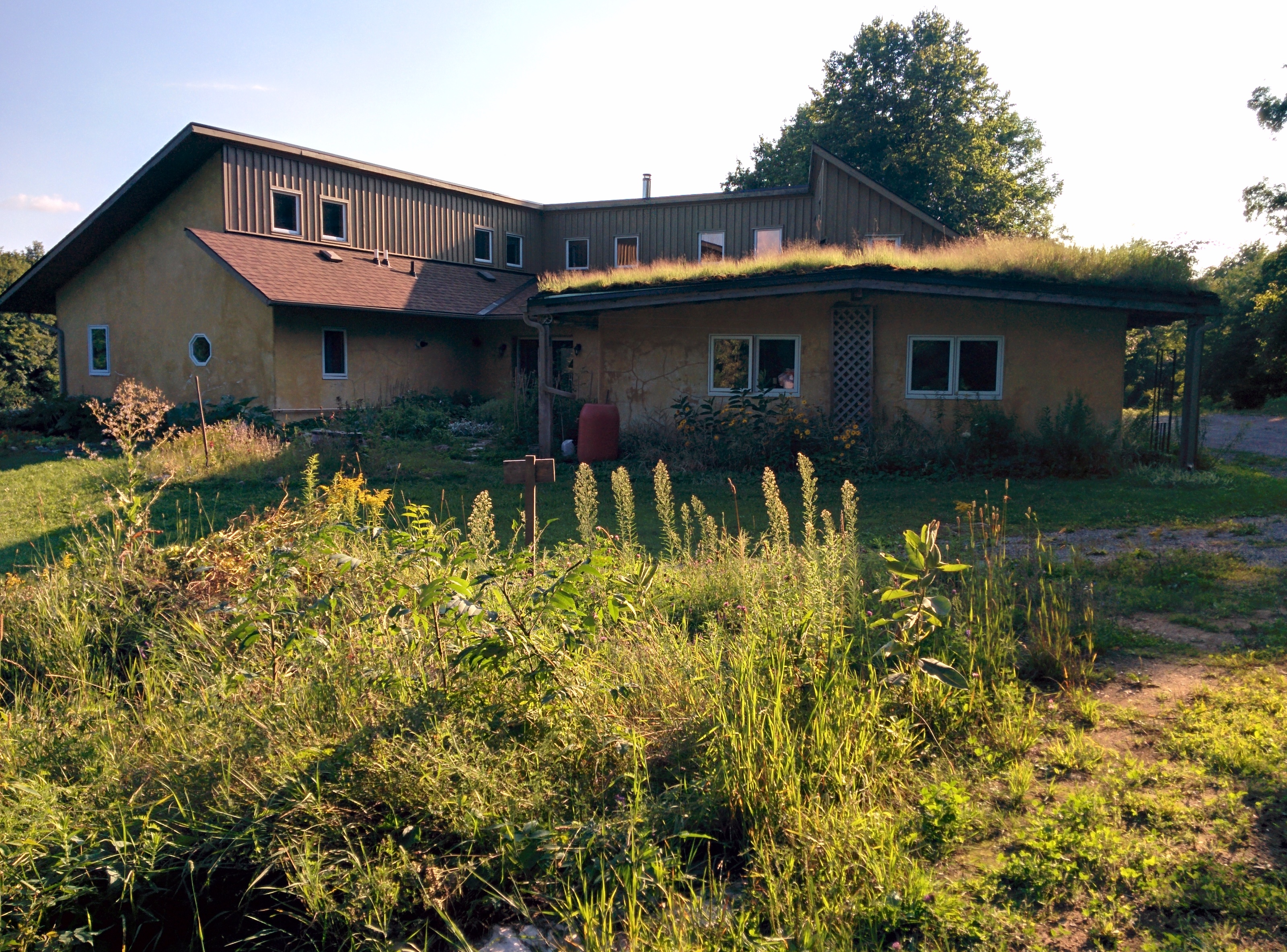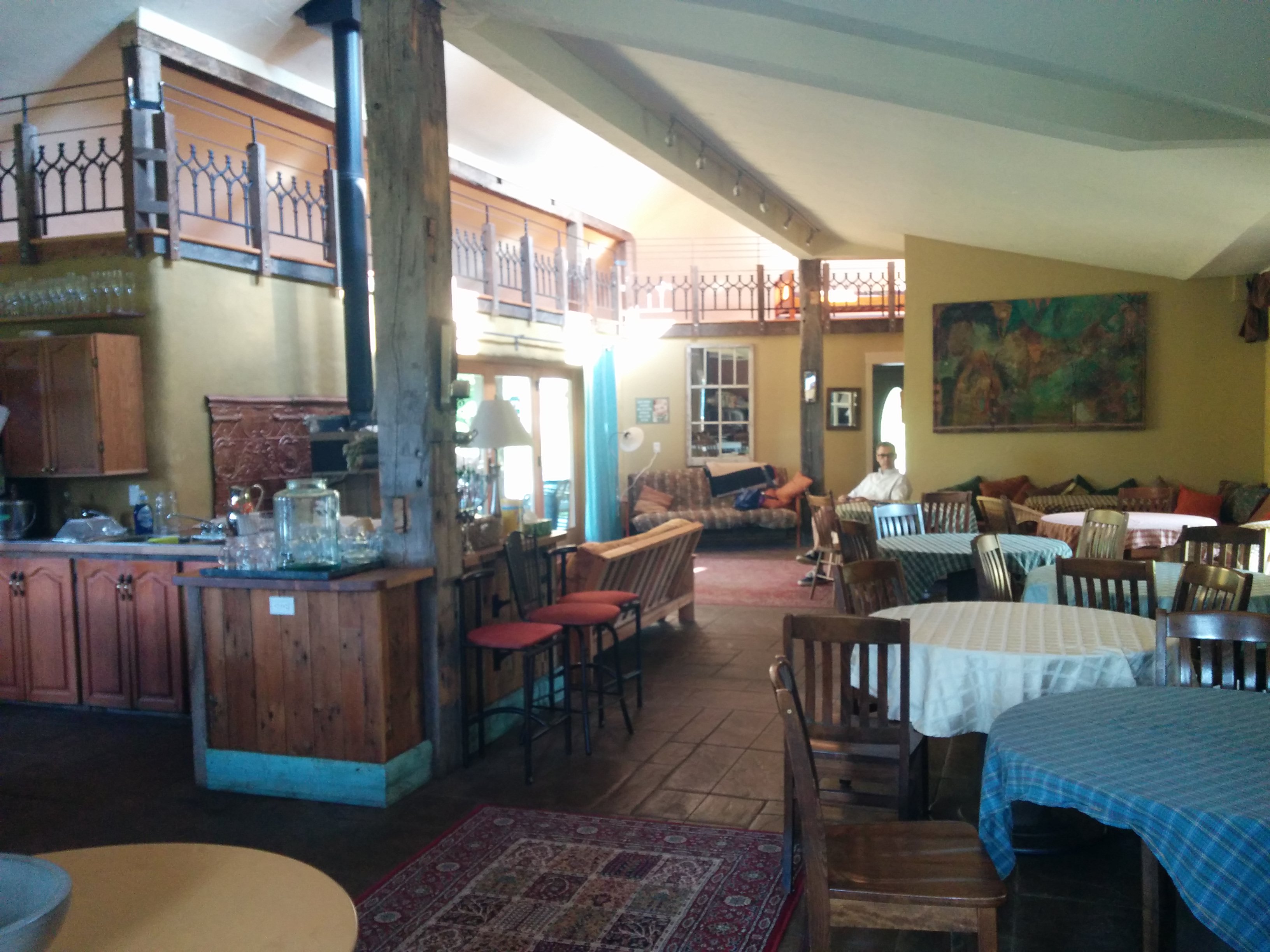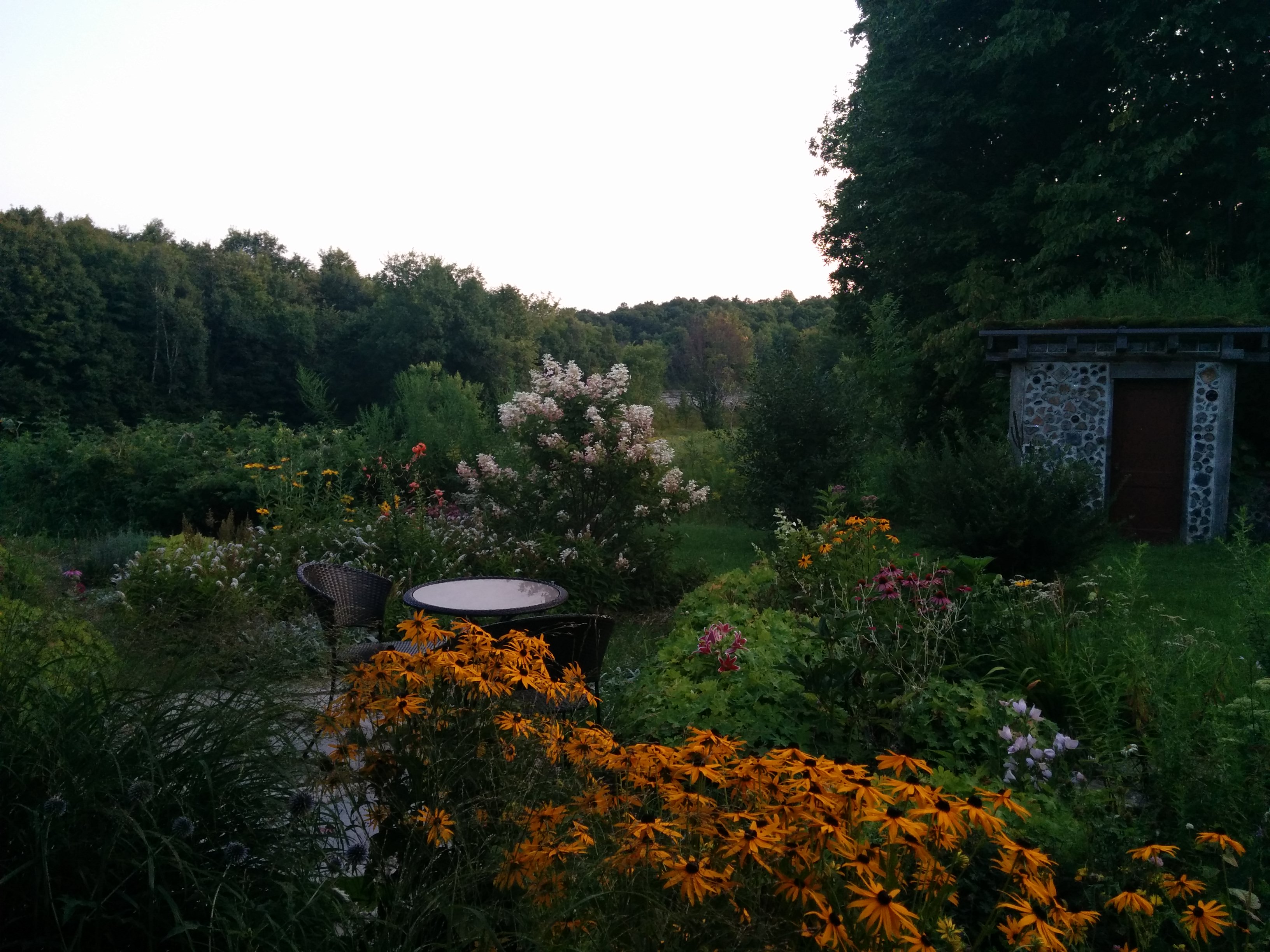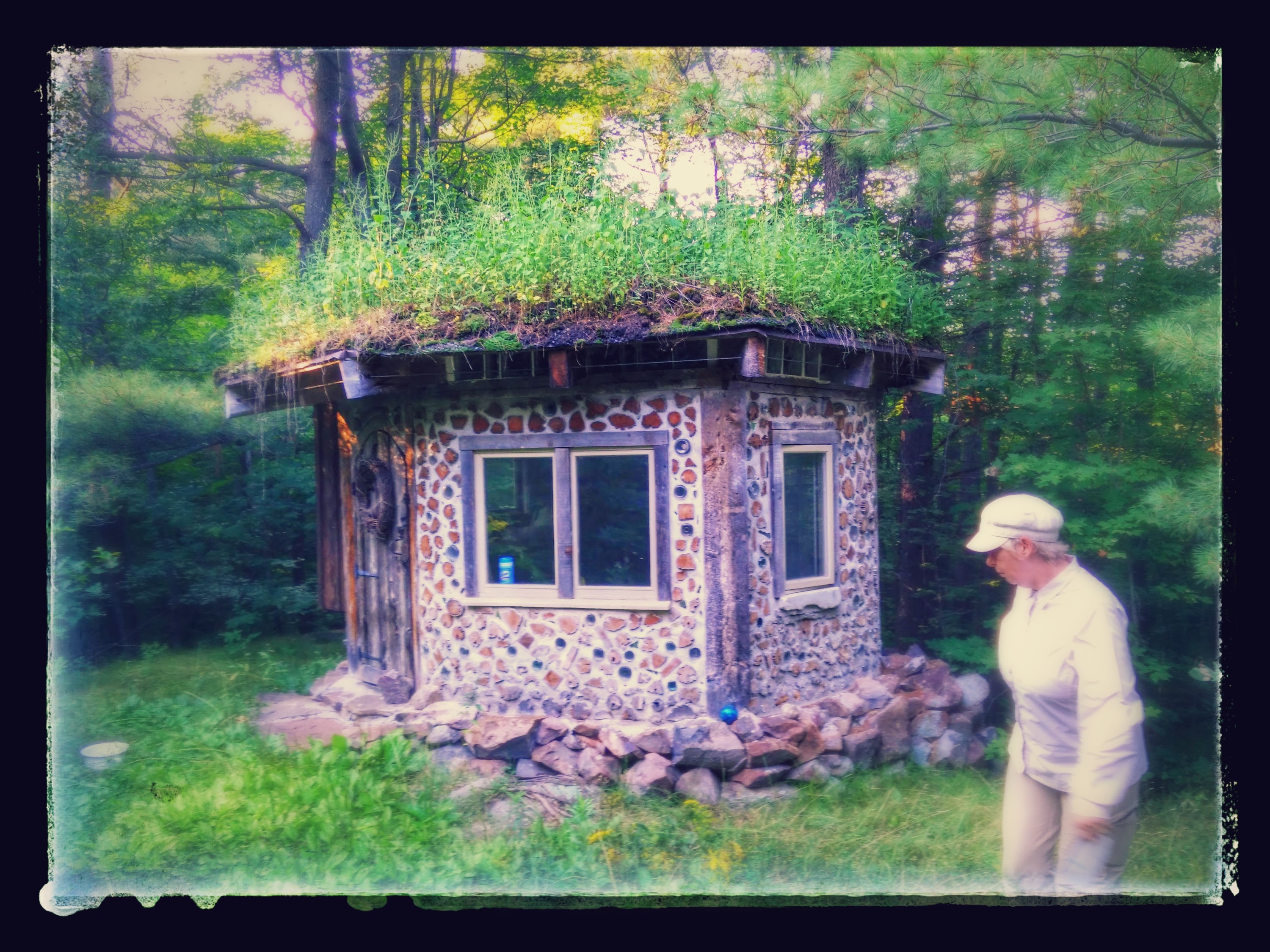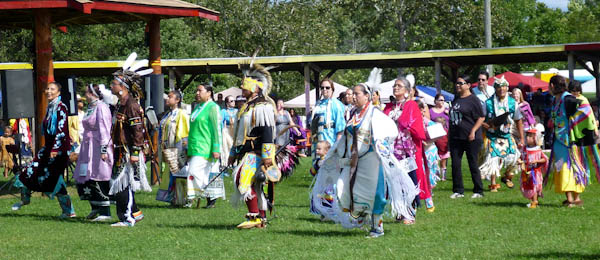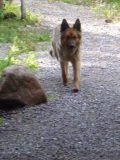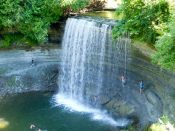You may be wondering what draws me to study and engage with Indigenous perspectives. Why is it important to me to be an ally as the many original peoples of Turtle Island (North America) attempt to reclaim their culture, heritage, language, and traditional teachings?
Background
In 2017, reflecting on the sense of ‘homecoming’ I felt in a return to rural life, I wrote:
I was ever a child of nature, integrally connected with the rhythm of the seasons and with a strong link between external and internal realities.
I never identified comfortably as an Englishwoman. I did wonder if, had I grown up in Scotland or Ireland, I might more easily have embraced a sense of identity. Even without any deep knowledge, it seemed to me that my way of relating to the world whispered of my Celtic heritage. But maybe it was just the influence of my Irish born grandfather, who spent much of his working life in the Far East. As a teenager, I connected particularly strongly with the awareness of the flow of Nature I found in Taoism. I was also struck by the wisdom I found in ‘Native American’ teachings.
Indigenous Canada
It is not, then, surprising that when we came to Canada, I would seek out knowledge of First Nations, Innuit, and Metis peoples. I made and continue to make concerted efforts to expose myself to Indigenous writing, art, and film.

What shocked me at the time was how little most Canadians seemed to know about Indigenous history and culture. I’m glad to say this has moved forward somewhat. This is in part because of the Truth and Reconciliation process. I reflected on the shift in my post Tyendinaga Pow Wow, August 10, 2024.
In 2013, we attended our first Pow Wow at Wikwemikong on Manitoulin Island. If you read the linked article, please be aware that knowledge is incremental. I would not, now, for instance, ever use the term ‘costume’. The beautiful clothing worn by Pow Wow dancers is termed ‘regalia’. It is deeply expressive of the spirit and heritage of the wearer. I understood a great deal more by the time we attended the Tyendinaga Pow Wow in 2024. It is important to remember that knowledge and understanding increase over time. Deepening these is an ongoing process.
Whilst working at the Anglican Diocese of Toronto, I chose to make Indigenous issues and the Truth and Reconciliation process the focus of my learning. I was lucky enough to be able to draw on the experiences and perceptions of one of the priests in my Bishop’s area, Riscylla Shaw. Riscylla, now a Bishop, is herself Metis. She served as a witness and an Ambassador for the Anglican Church for the Truth and Reconciliation Commission (TRC).
Reconciliation is about healing Canada. It is not an Indigenous problem. It is a colonization problem.
Kevin Lamoureux, Instructor, University of Winnipeg
So, what is it that draws me to this work?
- A belief that what is termed the Indigenous Worldview has much to offer all of us. Indigenous knowledge and wisdom concern our humanity. We need them for the whole world!
- It reflects a way of relating to the world that speaks to my sensibilities.
- An awareness of the damage inflicted by colonialism on Indigenous individuals and culture.
- An acknowledgement of my responsibility as a Canadian citizen to understand and address the impact of this as part of the ongoing process of reconciliation. Each of us has an opportunity to be part of the solution.
- My ongoing, lifelong commitment to making a difference and facilitating environments in which change can occur. It matters to me to use my voice and actions to bring about meaningful change.
What is meant by the term Indigenous?
In Canada, Indigenous refers to the original inhabitants of Turtle Island (what we know as North America) and their descendants. It is an umbrella term for First Nations (status and non-status), Métis and Inuit. Indigenous refers to all of these groups, either collectively or separately. It is also the term used in international contexts, e.g., the United Nations Declaration on the Rights of Indigenous Peoples (UNDRIP).
Whilst Indigenous is used as a collective term, it is most appropriate to refer to Indigenous peoples by the proper names of their communities or nations, e.g. Algonquin, Haudenosaunee, Anishinaabe. Canada was born of many Indigenous nations.
Indigenous Worldview
We are all connected!
It is generally perceived that Indigenous cultures have a holistic relationship to all things, seeing everything as interconnected. All living things contribute to the circle of life equally and should be acknowledged and respected as such.
There is no single Western or Indigenous worldview, but the following draws together and compares some of the common strands of each:
| Indigenous Worldview | Western Worldview |
|---|---|
| A spiritually orientated society, based on belief in the spirit world. We were born into this world to be spiritual, to be givers. | A scientific, skeptical society, requiring ‘proof’ as a basis of belief. |
| There can be many truths, dependent upon individual experience. | There is only one truth, based on science or Western style law. |
| Everything and everyone is interconnected. | Society and the way the world is viewed is compartmentalized. |
| The land is sacred. Mother Earth is sacred, and central to our existence. | The land and its resources should be available for development and extraction for the benefit of humans – it is Man’s to control. |
| Time is non-linear and cyclical in nature. | Time is usually perceived as linear and future oriented. |
| Feeling comfortable with your life is measured by the quality of your relationships with people. | Feeling comfortable with your life is related to how successful you feel you have been in achieving your goals. |
| Human beings are seen as equally important to plants, animals and other living things. | Human beings are assumed to be superior and living thing are structured in a hierarchy. |
| Wealth is shared – amassing wealth is important for the good of the community (mutual reciprocity) | Wealth is accumulated – amassing wealth is for personal gain. |
| Collectivism | Individualism |
| Silence is valued. | Silence needs to be filled. |
| Emphasis on responsibilities. | Emphasis on rights. |
Differing approaches to knowledge systems
There are, as a result of these differing Worldviews, very different approaches to knowledge systems:
| Indigenous Worldview | Western Worldview |
|---|---|
| Establishing and maintaining relationships with all of creation – people, the earth, the spirit world and the cosmos – is the key to the creation, acquisition and sharing of knowledge worth knowing. | Knowledge is perceived as linear, singular and static in nature, resulting in the valuing of one ‘correct’ answer to any problem or question. It devalues and displaces other ways of knowing (intellectual imperialism). |
| Alternate answers or strategies are valued for their wisdom. | The establishment of hierarchies within knowledge is valued. |
| Sharing of knowledge is valued, in particular the building of relationships through such sharing. | Scientific method is absolute and knowledge is often restricted, ‘held’ by ‘experts’. |
| Knowledge is rooted in and connected to the place from which it came. | Knowledge is compartmentalized and categorized into small components. |
| The diversity of ways different people will know, understand and use knowledge is valued. | Written and abstract (symbolic) forms of knowledge are valued. |
| Knowledge serves to exert power over biological and social systems. | |
| Knowledge is ‘property’ and a commodity. |
Native science works with the rational and metaphoric mind simultaneously. Its processes are tied to creativity, perception, image, physical sensing, and intuition.
Dr. Gregory Cajete, Director of Native American Studies and an Associate Professor in the Division of Language, Literacy, and Sociocultural Studies in the College of Education at the University of New Mexico
Combining different ways of knowing

There is an increasing interest in using different knowledge systems, braiding together Indigenous knowledge, the knowledge of Western science, and the knowledge of the land.
Robin Wall Kimmerer presented a lovely way of visualizing this as a Three Sisters Knowledge Garden. In her metaphor, corn represents traditional knowledge, providing the intellectual scaffolding. Beans represent scientific knowledge, which is guided (supported) by the corn. Squash creates the climate (shade) that enables growth and represents agencies and institutions. She also notes that there is a ‘fourth sister’, the one who tends the garden!
Native science is a metaphor for Native knowledge. It is the stories of the world that include creative ways for living and participating in relationship with the world through processes for ‘seeking life, relationship and meaning’.
Dr. Gregory Cajete, Director of Native American Studies and an Associate Professor in the Division of Language, Literacy, and Sociocultural Studies in the College of Education at the University of New Mexico
I find it very exciting to see these ways of knowing and of learning gaining some traction and shaping innovative curriculum planning, as well as social planning, in which some parity of value is ascribed to Indigenous knowledge.
Likewise, I am awed by the way in which Indigenous knowledge and values are being applied in many modern contexts including science, healthcare, and technology. This may not be commonplace, but seeing businesses and projects choosing to work in these ways and thriving is so encouraging.
So, what am I doing about it?
Formal Indigenous learning
In the last eighteen months I have undertaken some rather more focused learning. I am now in my second of four years of Four Seasons of Indigenous Learning. This course serves to support participants in deepening their understanding of Indigenous knowledge and perspectives while strengthening connections with the local Land and supporting more respectful, reciprocal relationships.
Last year consolidated my background knowledge. This year is more reflective and rooted in my own relationship to the land and the area in which we live, a way of learning much more consistent with Indigenous knowledge systems.
But it is the ten virtual sessions offered each year with a wide range of Indigenous presenters that are most impactful. Hearing experiences and perspectives firsthand has real depth. I have learned so much.
Although the hours required by the coursework are not onerous, I continue to develop my knowledge beyond its boundaries, and sometimes get sucked down rabbit holes! I genuinely find the history of Indigenous habitation fascinating, if complex. And I am awed by people like architect and spiritual giant Douglas Cardinal. There is always more to explore!
Community connections
Perhaps even more important, I have begun to make real connections and friendships in the local Indigenous community, have been honoured to share in some of the teachings. These connections offer the deepest learning.
Indigenous representation and perspectives in WordPress
I spearheaded an effort to start a conversation about Indigenous representation and perspectives in WordPress at the inaugural WordCamp Canada in Ottawa in the summer of 2024. I am now trying to ensure that the conversation continues and results in actions.
Land Acknowledgement
Our local lake association, Dog & Cranberry Lake Association, asked me to craft a Land Acknowledgement for them. Some debate about the Indigenous nations who have inhabited this land led me into some quite in-depth research. Once I have worked through my course for this year, I hope to put together an article for them reflecting Indigenous relationship to and habitation of this area.
An Indigenous cultural creative centre?
LodgePole Arts Alliance (LPAA) is a not-for-profit organization whose mandate is to build an Indigenous owned, operated, programmed, and animated land-based cultural creative center on the eastern edge of the Dish with One Spoon territories (Frontenac biosphere). This conceptual space will be inclusive, grounded in Eastern Woodland (Onkwe’honwe [Haudenosaunee] and Anishinaabe) cultural practices, knowledge and teachings, performances, exhibitions, and celebrations. This Indigenous-focused space will be the first of its kind in Canada on non-First Nation’s treaty/territory lands.
I am incredibly excited by what LodgePole Arts Alliance is proposing. It feels so appropriate given that Katarokwi (Kingston) was traditionally an Indigenous gathering place. I hope very much to become involved, at the very least volunteering to help with events.
Day-to-day
My relationship to the land and all that is is constantly deepened as I learn about Indigenous ways and perspectives. On a day-to-day level, I try to share the small amount of knowledge I have as and when people show interest, something that is becoming much more common.
This is how you change the world, the smallest circles first… That humble energy, the kind that says, ‘I will do what I can do right now in my own small way,’ creates a ripple effect on the world.
Richard Wagamese, One Drum: Stories and Ceremonies for a Planet















